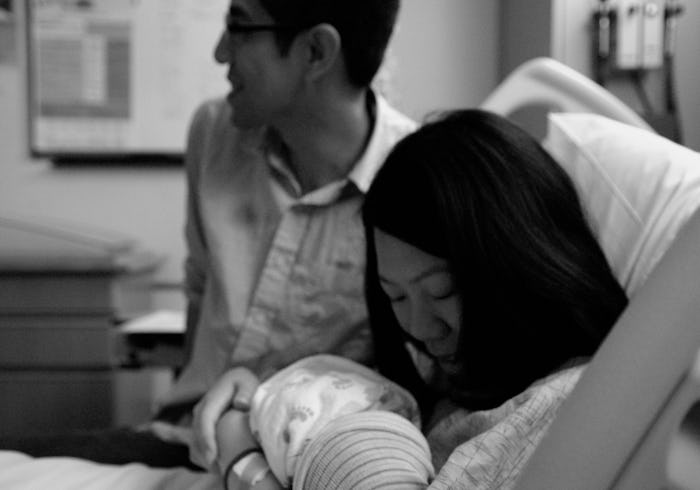Life

Is Postpartum Bleeding Common? 7 Ways To Deal With The Worst Period Ever
One of the (few?) nice things about pregnancy is that you have a temporary reprieve from periods. Regardless of the fact that I’ve been shedding my uterine lining for more than 15 years, it never really gets any more pleasant. What they don’t warn you about, however, is that you pay for those skipped periods with a little something called lochia, also known as postpartum bleeding (which I also not-so-lovingly referred to as The Worst Period Of My Life.) Postpartum bleeding is quite common and will leave most moms seeing red — literally — for the first few weeks of their child’s life.
According to BabyCenter, lochia is postpartum vaginal discharge that consists of blood, tissue shed from the lining of the uterus, and bacteria. Most of this blood comes from where the placenta was attached to the uterine wall. In the first few days after childbirth, this lochia will be bright red and look just like a very heavy period. By day 10, the lochia should have gone from red to pink to brown to yellowish white, and should stop completely by four to six weeks postpartum.
If you notice blood clots larger than a golf ball or you’re changing pads every hour, call your doctor, as you might have a postpartum hemorrhage. If your postpartum bleeding has a bad smell or you have a fever, it could be a sign of an infection and you should also call your doctor.
But if you’re just experiencing a beyond heavy flow, there are a few things you can do to manage the discharge. Here are just some ways to cope with the period from hell, to maximize healing and minimize bleeding.
1Stock Up On Pads
Unfortunately, tampons and menstrual cups are out of the question, because you risk infection if you insert anything vaginally, according to What To Expect. So get ready for that lovely diaper feeling. On the plus side, a giant pad will provide some, well, padding for your achy bottom.
2 Get Ready To Pee A Lot
Even if you don’t think you have to pee, go anyway. A full bladder can actually make after pains and bleeding worse, because it’s harder for your uterus to contract.
3Take It Easy
Stay off your feet and rest as much as possible. Too much activity can make bleeding worse.
4Breastfeed (If You Can)
Breastfeeding releases oxytocin, which BabyCenter notes can help your uterus contract. In the first few days after giving birth, you may feel cramping when you nurse. This is a good thing! It means that your uterus is contracting, which should help to reduce postpartum bleeding.
5Pop Some Pills
Take some Ibuprofen if you need it, but talk to your doctor before taking anything to make sure you’re physically in the clear.
6Don’t Panic
In the first few days following giving birth, you’re going to bleed a lot. And after almost a year without a period, it will probably look even heavier. It’s totally normal. And if you have any of the signs that it might not be, call your doctor immediately.
7Ask For Help
Take advantage of having the help of people around you, even if it’s just the nurses in the hospital. When you get home, if you have friends and family around for support, let them pamper you. It’s a perfect opportunity (and excuse) to do as little as possible, because healing is actually hard work.